Pinks and reds usually come to mind first when talking about roses, but lavender and purple varieties bring something really different to the table.
These roses add a splash of mystery and uniqueness that stands out both in gardens and floral arrangements.
If you’re looking to add a touch of enchantment to your rose collection, you’ll want to know what makes these blooms so special.
In this article, I’m covering the symbolism, most-loved varieties, growing tips, and the practical ways to use lavender and purple roses at home or in events.
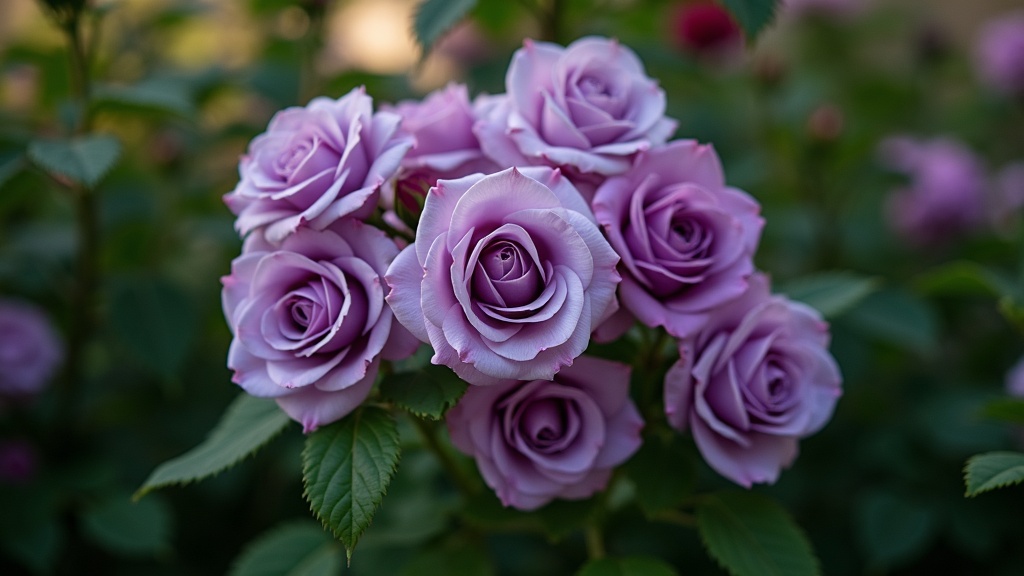
What Makes Lavender & Purple Roses Unique?
Spotting a purple rose in a garden always gets extra attention.
The secret is all in the pigment.
While pinks, reds, and whites show up naturally across wild rose species, purple tones take a little more genetic magic.
The natural rose gene pool simply doesn’t produce deep purples on its own.
Most purple and lavender roses we see today are the result of careful hybridization, with breeders cross-pollinating traditional roses with wild species that carry bluish pigments.
Hybridizers put in decades, sometimes generations, of careful selection to create the lavender and purple roses we enjoy now.
That’s why they’re not just rare in nature; they’re also highly prized by rose enthusiasts and collectors.
In a home garden or even just a bouquet, these roses grab attention right away.
Their color can range from soft silvery lavender to dark, sooty purple.
These shades look especially dramatic against healthy green leaves or when paired with white blooms for contrast.
What I love most is how these roses can totally transform the mood of a flowerbed or an arrangement.
Whether you’re after an ethereal, old world garden vibe or something more bold and modern, there’s a purple or lavender rose to fit the look.
Symbolism of Lavender & Purple Roses
Every rose color brings its own story, and lavender and purple roses have some really cool symbolism attached to them.
Lavender roses have long been a symbol of enchantment, first love, and admiration.
It’s the color you might use when you want a flower that feels a bit magical or otherworldly.
In Victorian times, where sending hidden messages through bouquets (called “floriography”) was all the rage, lavender roses hinted at mystery and love at first sight.
Purple roses lean even further into a sense of luxury and intrigue.
They carry the meaning of royalty, elegance, and a touch of mystery. That’s why you’ll sometimes spot purple roses in wedding bouquets for “queen for a day” vibes, or at upscale events as a sign of admiration and high regard.
Modern takes on these colors stretch even further; they’re now a choice for anyone looking to stand out, express creativity, or put a new spin on traditional floral gifts.
Gifting someone a lavender or purple rose tells them you think they’re unique, fascinating, and worth celebrating.
Whether you’re picking them for romance, friendship, or just to say “you’re special,” there’s a deeper meaning behind the color that adds a thoughtful twist.
Popular Lavender & Purple Rose Varieties
With so many breeders working on new shades and forms, lavender and purple roses come in loads of styles—from dainty hybrid teas to lush floribundas and dramatic shrub roses.
Here are some easy to find (and highly recommended) favorites if you’re thinking about adding these colors to your garden or gifting someone a standout bloom:
- Blue Moon: This classic lavender hybrid tea rose has elegantly pointed buds and a dreamy, true lavender bloom with a lovely fragrance. The color can look almost silver in the right light, making it ideal for special bouquets.
- Sterling Silver: One of the original lavender roses, Sterling Silver is famous for its pale, silvery petals. The blooms are usually large and have a vintage look, with a gentle scent that isn’t overpowering.
- Love Song: This is one of the most abundant lavender floribunda roses, with clusters of big, ruffled blooms. It keeps flowering from spring to late fall and holds its shape nicely in the vase.
- Midnight Blue: A standout for anyone chasing a truly deep purple, Midnight Blue roses have a rich color and a punchy, sweet spicy fragrance. They look great in low borders or mixed beds.
- Ebb Tide: The flowers on Ebb Tide are super velvety and a little smoky, falling somewhere between plum and purple. This variety is compact and is well suited for smaller garden spaces.
- Rhapsody in Blue: Known for its semi double, mauve purple blooms that often switch up in color as they age. This is a great choice for informal cottage gardens or wild looking borders.
How to Grow Lavender & Purple Roses Successfully
Just like any rose, growing the lavender and purple types takes patience and a bit of care, but there are a few things that make them different from your everyday reds or yellows.
Many of these varieties have slightly thinner petals or unique growth habits because of their complex genetics. Here’s what I’ve found works best:
- Climate and Soil: Lavender and purple roses prefer a mild, temperate climate; nothing too hot and humid, as that can cause petal burn and fade their unique colors. Well drained, fertile soil with plenty of organic matter keeps the roots happy and the color rich.
- Fertilizer: Feeding your roses with a balanced rose fertilizer really boosts bloom production and color intensity. Some gardeners use special phosphorus rich fertilizers to bring out even more vibrant purples and lavenders.
- Greenhouse vs. Outdoor: If you’re serious about seeing the deepest color possible, greenhouse growing helps a lot. Outdoor grown roses might bleach out in strong sun, but greenhouse roses keep their hues more saturated.
- Pruning and Care: Consistent pruning helps air circulate, which keeps disease in check, and encourages more blooms throughout the season. Water regularly at the base, not on the leaves, to avoid black spot and mildew, two things these roses can be a bit sensitive to.
- Disease Resistance: Some purple and lavender varieties are more delicate, especially the older ones. If you’re worried about upkeep, look for modern types that advertise disease resistance.
Trying a few different varieties is the best way to see which ones thrive in your garden.
If you’re starting with just one or two, I suggest planting in containers first. This lets you control the soil and move the roses to their favorite sun and shade spots as needed.
Where to Find Lavender & Purple Roses
These days, tracking down a truly unique rose is easier than ever.
Both local and online nurseries usually carry at least a few lavender and purple rose options, especially in early spring.
If you’re looking for the widest selection, especially rare or award winning cultivars, checking with specialty breeders or large online rose retailers is the way to go.
Florists also keep a rotating stock of these roses, particularly for weddings, anniversaries, or “just because” bouquets. It’s a good idea to order a bit ahead for big events because demand for these shades can be pretty high around peak gifting seasons.
When shopping for plants instead of cut flowers, always check for signs of healthy growth.
Look for strong stems, no black spots or wilting leaves, and if possible, a glimpse of the true flower color.
Reliable nurseries will also share full care details; worth reading before you buy, especially if you’re new to growing roses at home.
Uses of Lavender & Purple Roses
Purple and lavender roses aren’t just for show.
Gardeners love planting these as statement pieces, either as single specimens to catch the eye or planted in groups for a bold block of color.
Their unusual shades pair beautifully with softer hues, like cream, blush pink, or icy white, and really pop in classic cottage gardens.
If you’re into floral design, nothing sets off a bouquet like a single lavender rose or a handful as part of a mixed arrangement.
Weddings regularly feature these roses in centerpieces and bouquets, especially for themes that call for something whimsical or luxurious.
I also see more collectors adding them to personal rose collections, thanks to the ever growing variety of cultivars and the challenge (and fun!) of finding new shades to try.
Recommended Products for Growing and Enjoying Lavender & Purple Roses
- Lavender and purple rose plants or seeds (try specialist rose nurseries online for the best range)
- Rose fertilizers designed for color and bloom strength; look for slow release options made for flowering plants
- Portable greenhouse kits or LED grow lights for enthusiasts wanting to fine tune growing conditions
- Sharp pruning shears, gloves, and basic rose care tools for maintenance and shaping
- Organic Mulch or rose food to keep roots cool and protected during hot spells
FAQs About Lavender & Purple Roses
Are lavender and purple roses natural, or are they all hybrids?
Most lavender and purple roses you find in stores and nurseries are hybrids. Breeders use cross pollination to introduce blue or purple pigments into otherwise pink or white roses. While a few wild rose species have faint violet undertones, true lavender and deep purple shades don’t pop up naturally without human help. That said, all these roses grow just like more common varieties in a home garden.
What does a lavender rose symbolize?
Lavender roses traditionally symbolize enchantment, wonder, and love at first sight. In the language of flowers, they’re often sent to show admiration or to suggest someone is captivating or unique.
Which is the most fragrant purple rose variety?
Midnight Blue consistently gets rave reviews for its strong, sweet spice fragrance. Sterling Silver and Blue Moon are also both known for a beautiful, classic rose scent. Some newer varieties focus on disease resistance but still manage to keep that old fashioned fragrance intact.
Can I grow lavender roses in containers?
Absolutely. Many modern varieties work great in large pots or containers. You get more control over soil quality, watering, and sunlight, and you can move the pot to protect the plant from weather extremes. Just make sure to use a big enough pot (at least 18 inches wide), stick with very well draining potting mix, and water regularly during the growing season.
Beauty, Rarity, and Deep Symbolism
Purple and lavender roses are a real treat for gardeners and flower fans, offering colors you just don’t see every day, plus a bunch of rich meanings and stories behind them.
They’re worth exploring whether you want to take your garden up a notch, design a memorable bouquet, or just enjoy collecting something out of the ordinary.
Trying even one or two of these stunning roses opens up creative options both outdoors and indoors.
For those curious about what’s next, keep your eyes out for other unique rose colors.
There’s a whole world of striped, spotted, and even green tinted varieties popping up on the scene.
If you’ve caught the unusual rose color bug, you’ll want to check out the next guide: Striped Roses – Nature’s Masterpiece in Rose Cultivation.
Happy gardening and stay tuned!!!!!!!!!
Here’s a little transparency: Our website contains Amazon affiliate links. This means if you click and make a purchase, we may receive a small commission. Don’t worry, there’s no extra cost to you. It’s a simple way you can support our mission to bring you quality content.”

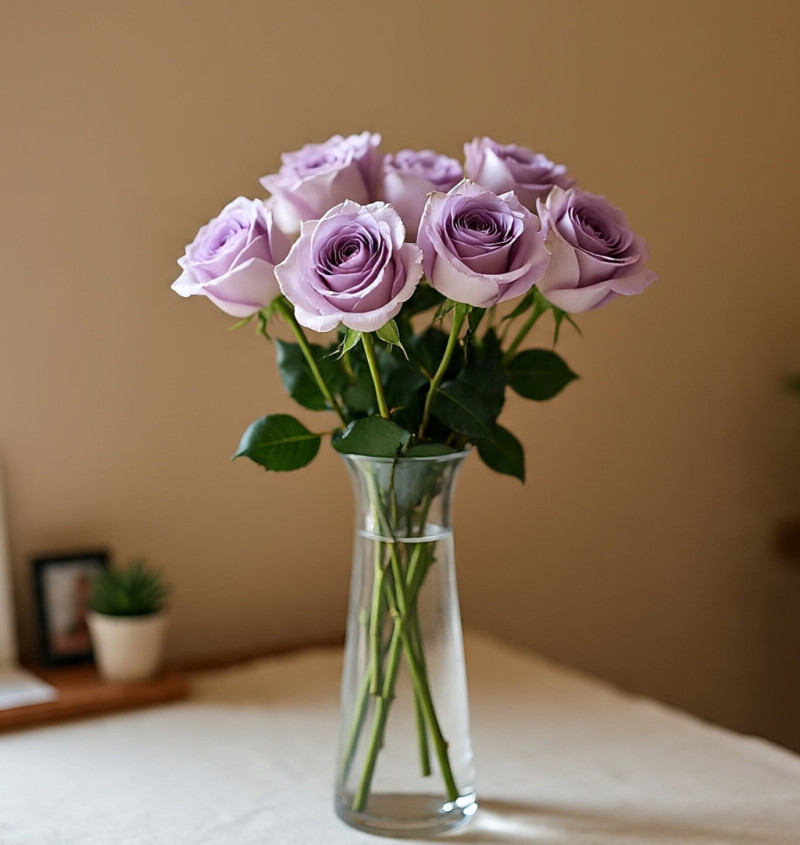
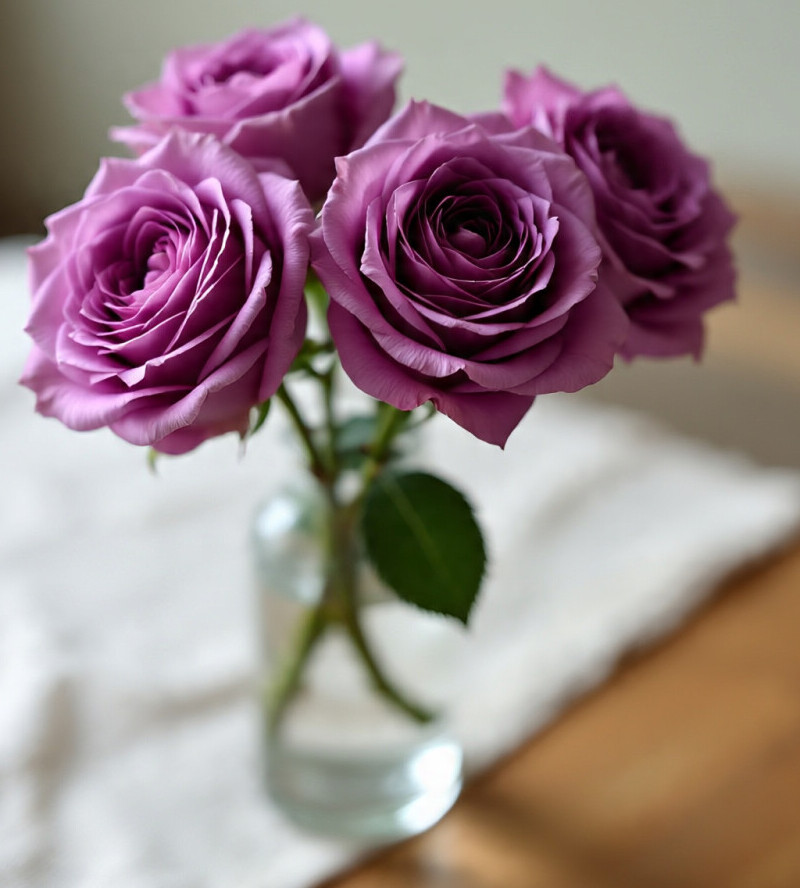
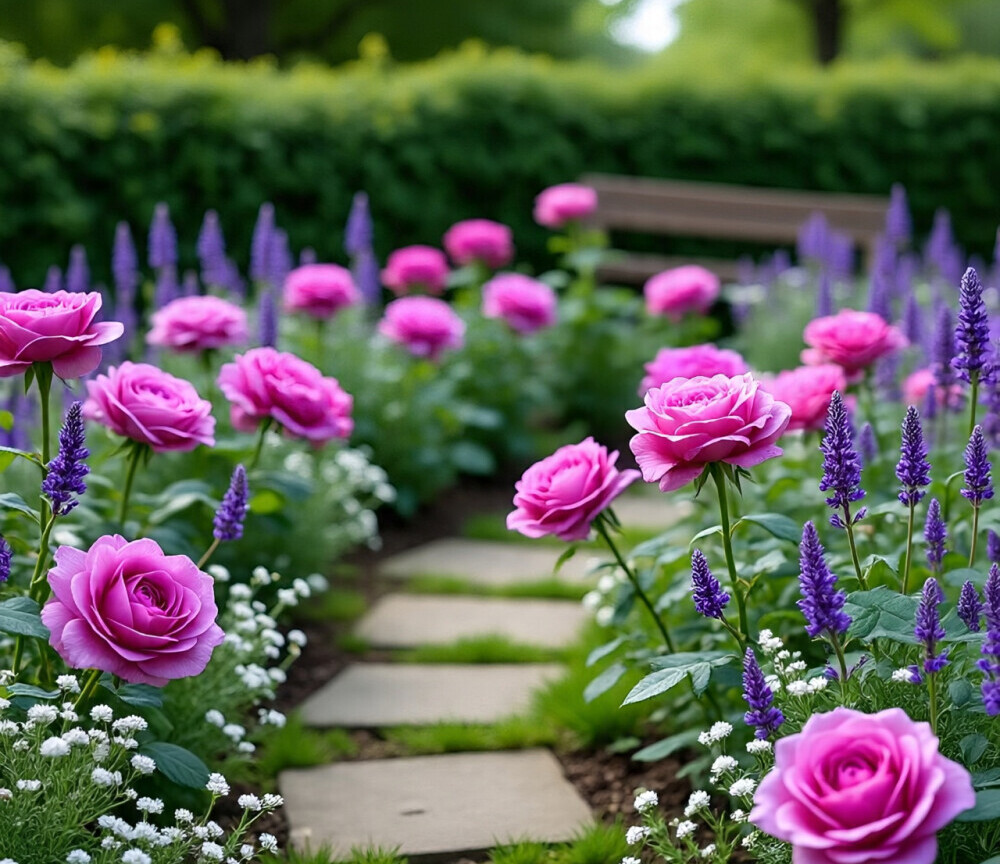
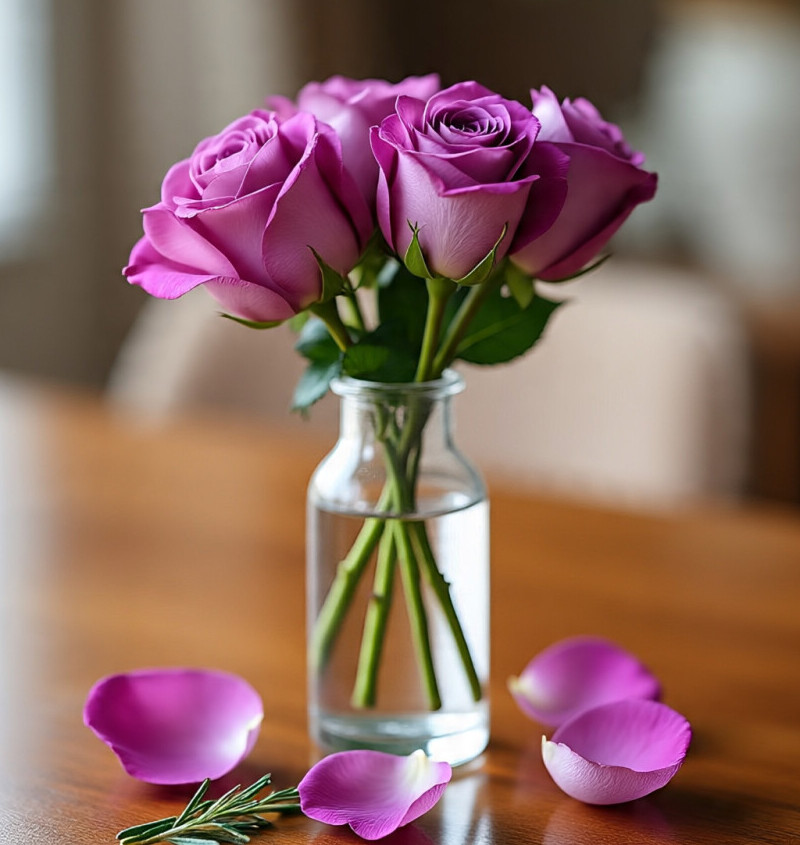
I’ve always been drawn to those dusky lavender and purple roses – they look like something out of a fairy tale. The article points out that lavender roses were created through cross‑breeding and have become a symbol of enchantment and love at first sight. I had no idea there were so many varieties, from pastel ‘Blue Moon’ to deeper plum tones, and it’s neat that purple roses were once only grown for royalty. As a gardener, I’d love to know which fragrant varieties are easiest for a beginner and whether their color fades in full sun. Do you have a favorite purple rose that stands up to heat and humidity? Reading this definitely made me want to add a touch of mystery to my garden.
Thanks so much A Jaynes! I am super excited that you are enchanted by lavender and purple roses – they’re indeed magical.
For beginners, ‘Blue Moon’ and ‘Midnight Blue’ are great options, and both have lovely fragrances.
As for color fading, some varieties might experience slight fading in intense sunlight, but most retain their beautiful hues.
When it comes to heat and humidity, ‘Midnight Blue’ is a great choice – it’s relatively resilient.
I am at the moment working on posts about roses that have lovely fragrances.
Stay tuned!!!!!!!